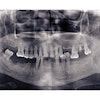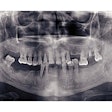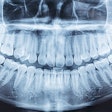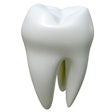Patients with amalgam restorations should think twice before undergoing an MRI of the head and neck region, according to researchers from the School of Dentistry at Shiraz University of Medical Sciences in Iran.
In a study published in Dentomaxillofacial Radiology (October 2009, Vol. 38:7, pp. 470-474), A.A. Alavi, D.M.D., and colleagues evaluated the microleakage of amalgam restorations following an MRI. They divided 63 human freshly extracted premolars into three groups based on three different amalgams -- Cinalux (Faghihi Dental), GS-80 (SDI), and Vivacap (Ivoclar Vivadent) -- used to restore standard class V preparations on buccal and lingual surfaces.
The teeth were transferred into saline solution for two months at room temperature and then sectioned. MRI was randomly applied to one-half of each section, while the other half was kept as a control. Following MRI, all specimens were immersed in a dye solution and analyzed with a stereomicroscope.
"Because of the potential hazard imposed by the presence of ferromagnetic metals, patients with implanted metallic objects are excluded from MRI," they wrote. "However, amalgam restorations seem to be safe."
But when they evaluated the teeth in their study, while no significant difference was observed between the microleakage scores in the two Cinalux groups (p = 0.10), the microleakage scores were significantly different between the control halves and the exposed halves in the GS-80 group (p = 0.006) and the Vivacap group (p = 0.04).
They determined that the microleakage occurred due to thermomagnetic convection, a form of heat transfer that occurs during MRI.
"The results of this study suggest that MRI is not a completely safe technique in patients with amalgam restorations," they concluded.
Copyright © 2009 DrBicuspid.com


















